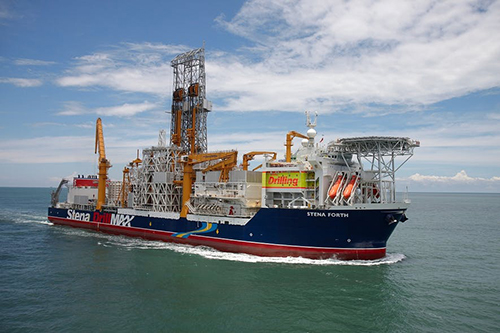Edgar Brandt
Maihapa Ndjavera
The mines and energy ministry yesterday reiterated that the oil deposits discovered in the Orange Basin offshore Namibia by Shell have not yet been confirmed to be commercially viable but do indicate the existence of an active petroleum system in the area.
Both Shell, with its Graff-1 well, and TotalEnergies, with its Venue-1 well, are operating two high profile wells within the Orange Basin and the recent success in confirming oil deposits is expected to make the Orange Basin one of the hottest exploration destinations in the world.
“The ministry would like to inform your office that operations for the Graff-1 well are still ongoing. It is the objective of the project and of government, through the National Petroleum Corporation of Namibia (Namcor), to safely execute the operations and collect quality data, to enable a thorough assessment of the prospect potential,” said ministerial spokesperson Andreas Simon, in response to questions from New Era.
“Our position currently, is that no commercial discovery has been made. We are not sitting with data that can confirm that. The only update we have is that there is a presence of an active petroleum system. However, further work needs to be conducted to determine the viability of that petroleum system. We are interested to know in the end, whether the findings that should be presented to Namcor and to the line ministry, are indeed commercially viable or not,” Simon responded.
Moreover, the ministry expects Shell to conclude initial drilling during the course of the coming week, after which officials expect to have more information for the public.
Said Simon: “As soon as all the data has been analysed, the ministry will issue a full results announcement”.
Meanwhile, speaking to a local newspaper earlier in the week, mines and energy minister, Tom Alweendo said “As you might be aware, Shell started with an oil drilling campaign offshore last December. As a result, there have been persistent media reports that Shell made a significant oil discovery. As of now, no commercial discovery is made. However, the drilling results so far are that there’s a presence of an active petroleum system. However, more work still needs to be done to establish whether there’s enough quantity that can be exploited commercially. The drilling campaign is planned to end sometime next week and thereafter we’ll have more information.”
According to a Reuters report, it is still unclear if the recent discovery is big enough for Shell to go ahead with the development of Namibia’s first deepwater field. Also, oil industry trade magazine, Upstream reported that the Graff-1 well results have so far shown at least two reservoirs containing what one of the sources described as a significant amount of oil and gas.
According to a second source cited by Reuters, the drilling results have shown one layer at least 60 metres deep of hydrocarbons, holding an estimated 250 to 300 million barrels of oil and gas equivalent.
Shell holds a 45% stake in the offshore Petroleum Exploration Licence 39 (PEL 39) with a 45% interest held by Qatar Petroleum and a 10% held by Namcor.
The recent discovery, reported by New Era last week, comes as Shell begins winding down its oil production as part of a plan to shift to renewable energy and low-carbon fuels. Despite these plans, Shell could opt to develop a new field to replenish its reserves and replace production declines elsewhere.


